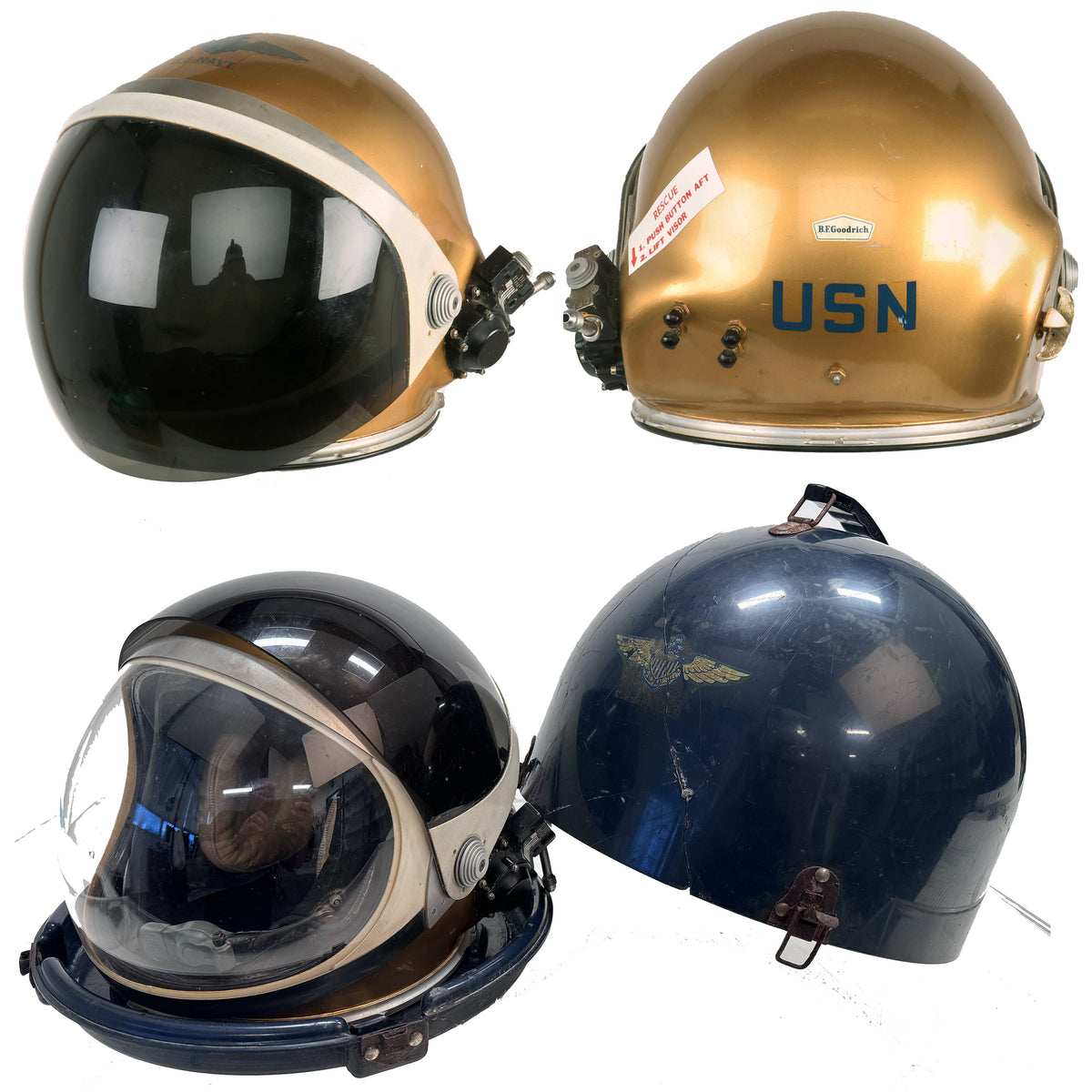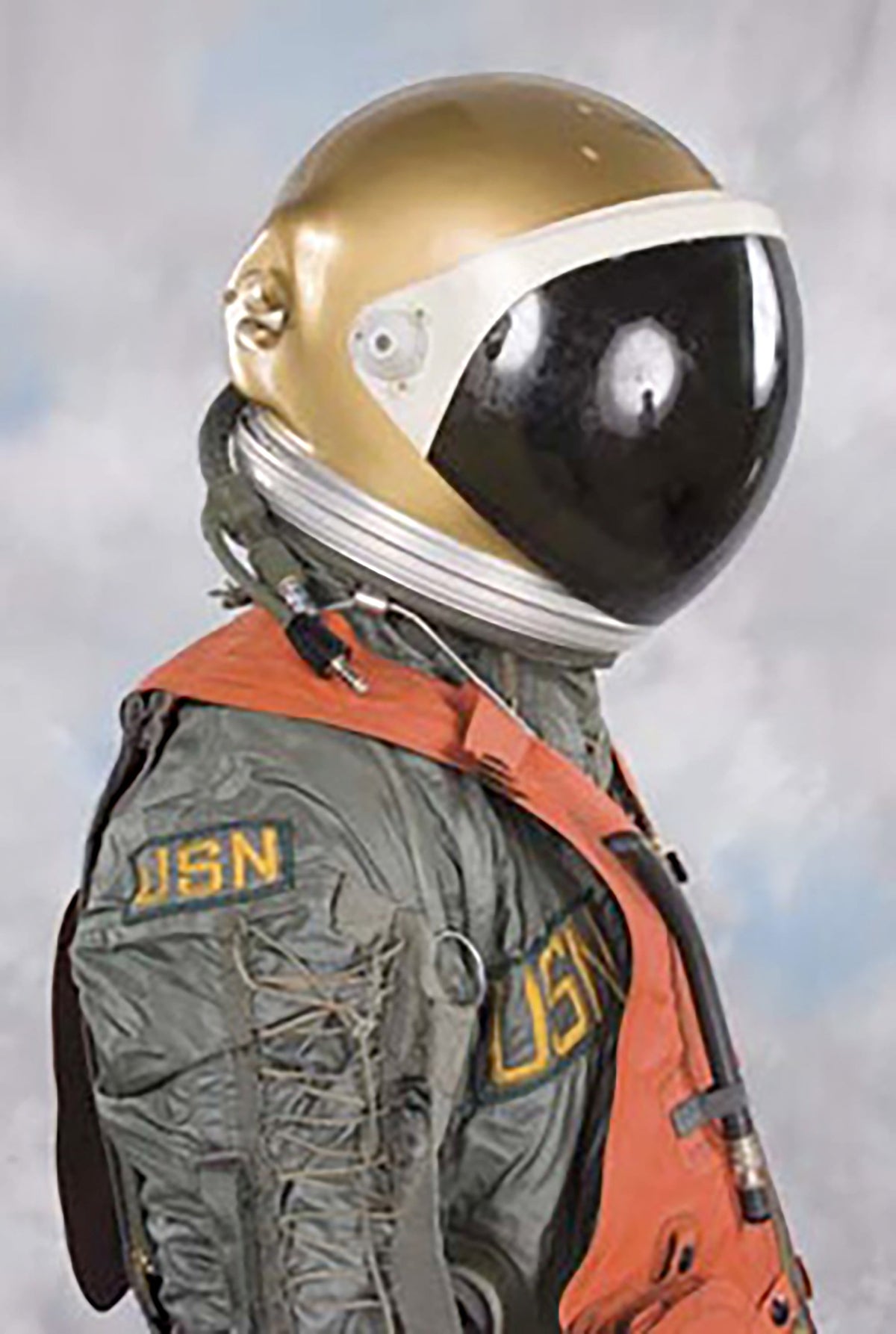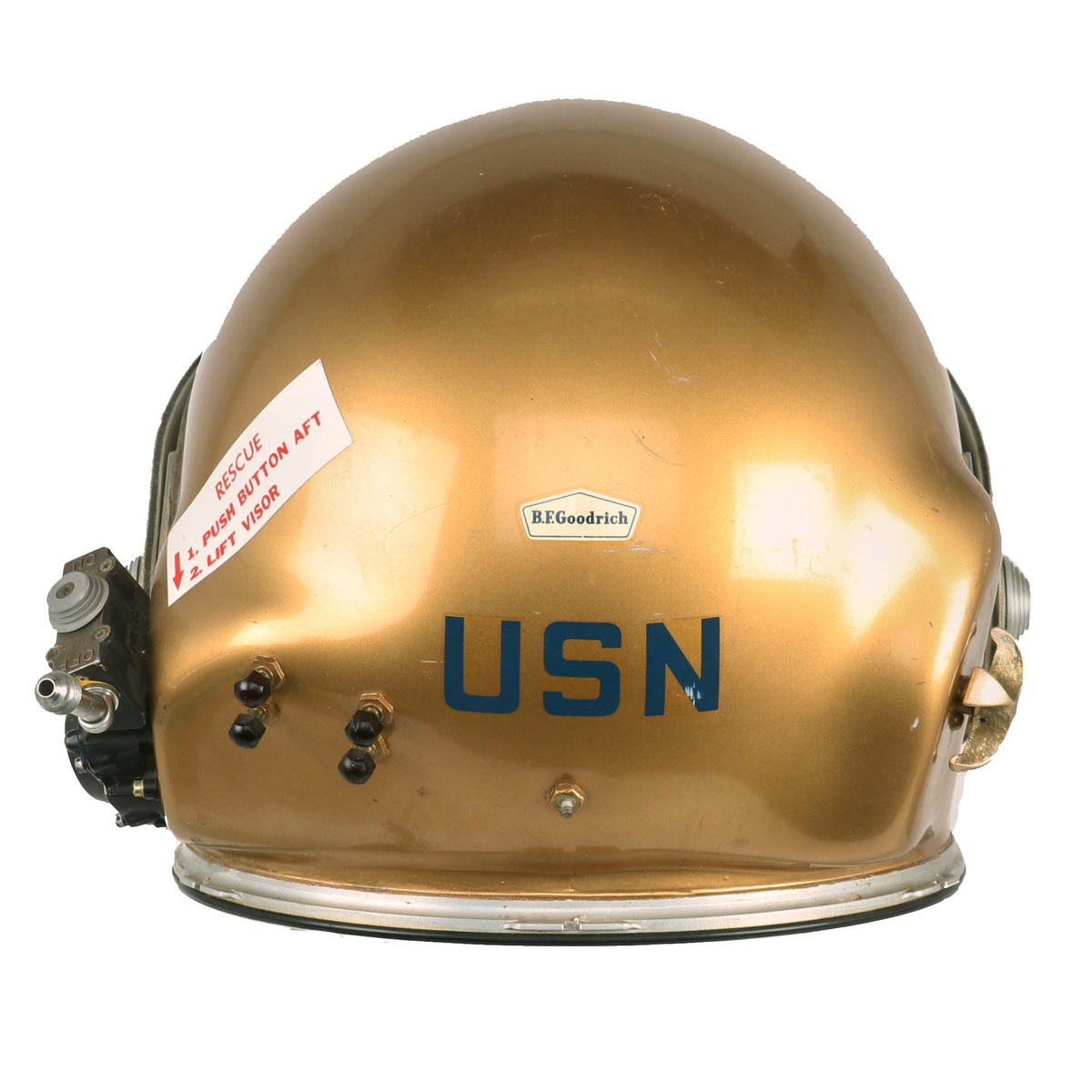Original 1961 U.S. Navy MK IV MOD 1 High Altitude Full Pressure Flight Helmet with Original Carrying Case- NASA Mercury Program Original Items
$ 5.495,00 $ 1.373,75
Original Item: Only One Available. A nearly identical example of this MKIV High Altitude helmet can be found in the Smithsonian Air & Space Museum at this link.
This is an excellent example of a very rare U.S. Navy Mk IV, Mod 1, Type 1 Helmet. Undoubtedly one of the absolute hardest examples of U.S. Military Flight Headgear to locate, with very few having been made, and even less surviving to today. These helmets seldom come to market, with most being retained in museums and private collections. We have had the opportunity to offer very few of these helmets in the past, however, this is the absolute finest example we have ever had the pleasure of offering!
This Helmet is dated “1-61” (January 1961) and was manufactured by the B. F. Goodrich Company. These Helmets, along with the corresponding suit, were later used as the basis of NASA’s original Earth-Oribital Suit used during the Mercury Program. In fact, the original Mercury Program Prototype Suits were reworked MKIV Suits reworked to meet the needs of the space program!
The Helmet is complete with both clear and sun visors, US Navy decal and earphones (marked “H-143/AIC / ROANWELL CORP”). The circular crown padding at the top of the interior suspension reads as follows:
2657
HEADPIECE, MK IV, MOD 1,
FULL PRESSURE SUIT
TYPE I
STOCK No.RH8475-521-6082-SIR8 (LX7X written over in pen)
MFG’D BY THE B.F. GOODRICH CO.
DATE MFG’D 1 61
CONTRACT NO. N383 (17-MIS) 64733A
U.S. NAVY
The reverse exterior of the Helmet features a B.F. Goodrich logo decal, and below a “USN” Decal.. On the left is a decal that reads “RESCUE/ 1. PUSH BUTTON AFT / 2. LIFT VISOR”.
The Helmet overall is in fantastic condition, showing light handling on the exterior, with a few light scuffs here and there. The visors are in good order, with the locking mechanisms working as they should. The interior is in equally good condition with only a few detractions which do not detract from the outward appearance or displayability of the helmet. The headphone cushioning underneath the chamois leather has disintegrated, which is common for the 60+ year old rubber used in these helmets. The nylon headphone retaining straps are each missing the snaps, which is barely noticeable. The most major detraction being that a 2 ½” x 2 ½” piece of the rubber face gasket is missing in the chin area (which is not noticeable from the exterior of the helmet.
Included with the Helmet is the Original Plastic Carrying Case, which are actually rarer than the helmet itself. The case, unfortunately, was stored poorly with the buckles in rusted condition, with two missing the hasps. Numerous pieces of the plastic case were broken, with them being reattached with glue. Regardless of the condition, it is an exceedingly hard piece to find, which compliments the Helmet.
The Navy High Pressure Flight Helmet
By the early 1960s, the US Navy had progressed through a series of developmental models of the full pressure suit that would ultimately take final form in the Mark IV, Model 3, Type 1, a production suit which US Navy aircrew wore on high altitude flights during its cold weather operations.
Regardless of the success of the A/P22S-2 suit and its modifications in Air Force use, it remained part of the US Navy’s cooperative program with the B. F. Goodrich Company, and pioneer suit designer Russell Colley, to solve some important problems concerning mobility and full pressurization. One of the most important developments was an aneroid suit controller that maintained suit internal pressurization at precisely 0.24 bar. The Mark series of US Navy full pressure suits which followed culminated in three models of the final Mark IV suit, which went into production in 1958 as standard high altitude issue for US Navy squadrons. The Mark IV, Model 3, Type 1 suit featured various enhancements in fit and ease of donning, as well as substantially improved pressurization control. It would go on to be selected as the basic foundation of NASA’s early earth-orbital suit (the original Mercury prototype suits were specially reworked Mark IV suits).
Fast Shipping with Professional Packaging
Thanks to our longstanding association with UPS FedEx DHL, and other major international carriers, we are able to provide a range of shipping options. Our warehouse staff is expertly trained and will wrap your products according to our exact and precise specifications. Prior to shipping, your goods will be thoroughly examined and securely secured. We ship to thousands clients each day across multiple countries. This shows how we're dedicated to be the largest retailer on the internet. Warehouses and distribution centres can be located throughout Europe as well as the USA.
Note: Orders with more than one item will be assigned a processing date depending on the item.
Before shipping before shipping, we'll conduct a thorough inspection of the items you have ordered. Today, the majority of orders will be delivered within 48 hours. The delivery time will be between 3-7 days.
Returns
The stock is dynamic and we cannot completely manage it because multiple stakeholders are involved, including our factory and warehouse. So the actual stock may alter at any time. It's possible that you may not receive your order once the order has been made.
Our policy is valid for a period of 30 days. If you don't receive the product within 30 days, we are not able to issue a refund or an exchange.
You can only return an item if it is unused and in the same state as the day you received it. You must have the item in its original packaging.
Related products
Uncategorized
Band of Brothers ORIGINAL GERMAN WWII Le. F.H. 18 10.5cm ARTILLERY PIECE Original Items
Uncategorized
Armoured Fighting Vehicles of the World: AFVs of World War One (Hardcover Book) New Made Items
Uncategorized
Uncategorized
Uncategorized
Uncategorized
Uncategorized
Uncategorized
Uncategorized
Uncategorized
Uncategorized
Uncategorized
Uncategorized
Uncategorized
Uncategorized
Uncategorized
Armored Burgonet Helmet & Polearm from Scottish Castle Leith Hall Circa 1700 Original Items
Uncategorized
Uncategorized












































































